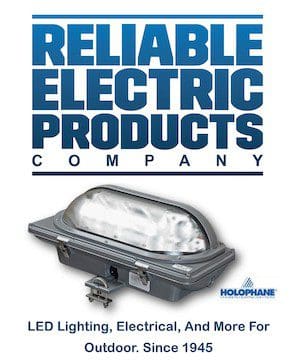
Daktronics Lab Services Group engineering manager Shannon Mutschelknaus had lots of things to say about LED’s on this week’s Daktronics Experience Podcast
On the 100,000 hour life for LED’s
Where does that number come from…this goes back to the 80’s when LED’s were starting to become more common…And inside LED’s is a diode and that diode when operated properly can last a very long time…It only refers to the diode chip itself. There’s a whole lot of other parts there that don’t last 100,000 hours…
On LED light construction
There’s a lot more stuff in an LED light bulb than in an incandescent. There’s the LED’s. But there’s also a power supply because LED’s can’t run on 120 volts. So there’s a power converter in there that takes that 120 volt AC current and converts it to DC current. And that guy is the main thing that goes out…but LED’s do fail as well.
On how Daktronics tests LED’s
We use a lot of LED’s. We actually have a really great test platform for testing LED’s…We break down what the design of the part is and look at what are the failure mechanisms that might happen…I mentioned temperature cycling. Parts turning on and off…Being outside in the sun causes it to get hot and cool. We’ll device a test method to accelerate that failure…
On the relationship between brightness and LED life.
How hard you’re driving an LED will impact how long it will last…Different LED’s will degrade at different rates. So it’s possible that you have a really high end, really high quality LED. It’s not going to suffer much from that high temperature operation. But if you have a low cost LED you might be driving it much harder to fight the sun and it will degrade much faster…Your power supplied might fail…Chunks of the display will turn off.
How does an LED degrade?
There’s not exactly a filament but there is a chip, a diode and there’s degradation mechanisms that can cause the chemicals, the materials in that diode to degrade…there are conductive adhesives that have little silver particles in there and they’ll delaminate or separate and they won’t conduct electricity. That can fail. Sometimes we’ve seen the metal leads in LED’s when they bend them or form them they might crack them. And that crack could cause it to fail. Or in our case we put a lot of surface mount devices outside. They can get moisture into the chip if it doesn’t stay sealed. And if moisture get in there something called electrochemical migration happens and you’ll actually have metal form little tree structures and shorts will happen. And then we’ll have an effect that we’ll call catterpillaring or ghosting…basically a string of LED’s that get stuck on or stuck off…The lumen maintenance standard for 50% of brightness, that sticks out, most people know that. But a much more severe effect…is when LED’s are stuck off or even worse when they’re stuck on…the display will go to black in between frames sometimes and there will be a pixel or two stuck on…that’s usually due to some sort of corrosion inside the LED that causes a short.
On the importance of using a digital billboard with quality LEDs
There’s very cheap LED’s on the market. On paper they might look the same…They might be 100,000 LED’s. They may just take that number and put it on the spec sheet. ..You could go from a display which could last one year to a display which could last 10 years.
[wpforms id=”9787″]
Paid Advertisement

















